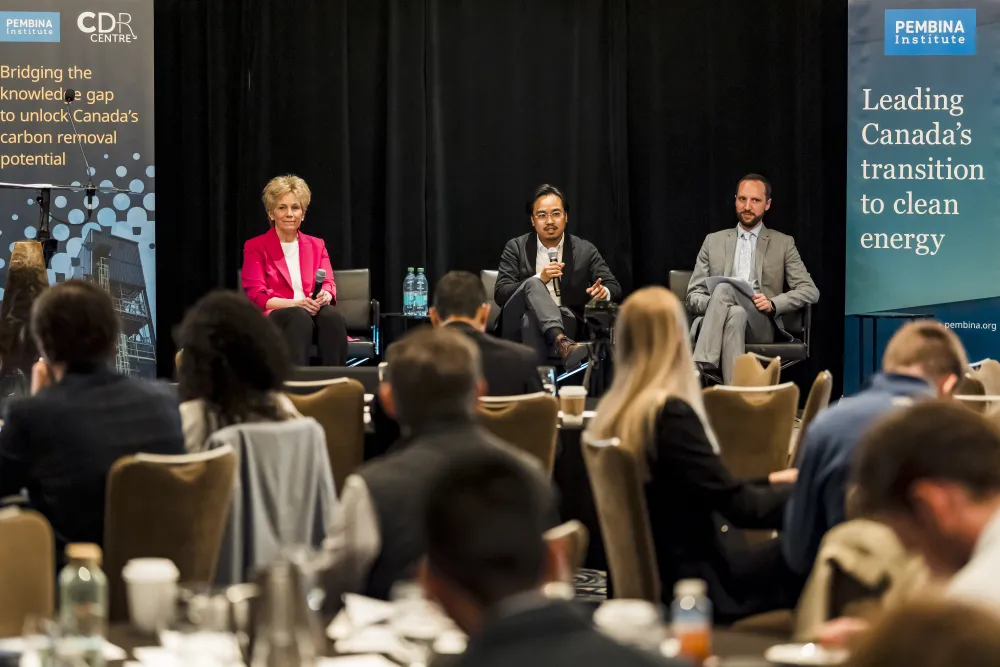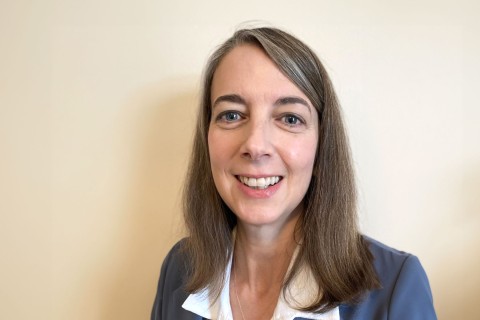An open mindset on the part of both community leaders and carbon dioxide removal (CDR) developers is the key ingredient in bringing economic benefits from this fledgling industry to communities, a Carbon Catalyst audience heard on April 30.
The one-day Calgary conference, organized and hosted by the Pembina Institute’s CDR Centre, brought together all the various players involved in this emerging industry.
CDR has enormous potential for job creation, economic diversification and community investment. But the communities who want to benefit need to have an open mind to welcome this as yet little-known industry to their roster of revenue generators. And the developers who want to build out their technologies on the Canadian landscape need to engage with all community questions and concerns in an open and empathetic manner. These were the messages shared at the conference by the current Canadian leaders in the CDR developer-community interface.
Our director, Jorden Dye, sat down for a conversation with Innisfail Mayor Jean Barclay and Phil De Luna, chief science and commercial officer for Deep Sky, a carbon removals project developer.
Innisfail embraces innovation
Barclay said her mid-size Alberta town already had a reputation for innovation, openness and getting things done quickly, and that this helped them attract and secure Deep Sky Alpha, the company’s first testing facility. She credited her fellow councillors and the town’s administration with vetting and facilitating the company’s project in their community.
But she also noted the way that Deep Sky engaged with community members made a huge difference.
They brought their whole team in for two consecutive days of an open house. And they set up learning stations where the public could come in and ask questions directly.
“People are very excited about it,” she said, about the project, noting that Deep Sky has put the town on the technology map now, “…and we’re getting noticed more.”
Developers must work in partnership with communities
De Luna said that scientists like him often approach problems like climate change simply as something to be fixed, but that it’s important to build the projects in partnership with the community where the solution is going to be implemented. The open houses they had were packed. “It was standing room only. You couldn’t move a few feet without bumping into somebody. And the questions that people had were just so genuine, and intelligent and thoughtful.”
De Luna’s advice for other CDR developers was to be curious about what they can do for the community they want to approach to host their project. “Not how are you going to help me accelerate permitting or what tax incentive breaks can I get. It should be about what can we build together and why is that going to be just the best thing in the world.”
Communities have a once-in-a-lifetime opportunity
Barclay underlined that communities really do have to seize this CDR development moment. “We need to embrace what we have before us right now because it’s a once-in-a-lifetime opportunity.”
The toolbox for creating revenue for the municipality is very narrow, she said, and so council does what it can to generate revenue and increase their top line, so they don't always have to go to the taxpayer. Being open for business and having an open mindset are hugely helpful in that regard.
“Back in the day I remember somebody said to me, ‘The most expensive thing you can own is a closed mind,’ and I think that’s so true,” Barclay said.
Stay tuned for a more comprehensive report on other Carbon Catalyst conference proceedings, to be shared later this month.









